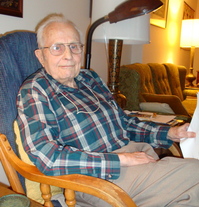 Frederic Kottke attended the University of Minnesota for his undergraduate and graduate education, receiving his B.S. in 1939, his M.S. in 1941, his Ph.D. in Physiology with a minor in pathology in 1944, and his MD in 1945. He joined the faculty of the Medical School in 1941 and served as head of the Department of Physical Medicine and Rehabilitation from 1952 to 1982.
Frederic Kottke attended the University of Minnesota for his undergraduate and graduate education, receiving his B.S. in 1939, his M.S. in 1941, his Ph.D. in Physiology with a minor in pathology in 1944, and his MD in 1945. He joined the faculty of the Medical School in 1941 and served as head of the Department of Physical Medicine and Rehabilitation from 1952 to 1982.
Interview Abstract
Frederic Kottke begins by describing some of his background, including his education and why he went into medicine and specifically physical medicine and rehabilitation. He briefly talks about the establishment of the Department of Physical Medicine and Rehabilitation; the integrative and interdisciplinary approach to medicine in physical medicine and rehabilitation; the different types of patients he saw; funding at the University of Minnesota; perceptions in the 1960s that there was a shortage of physicians; the Medical School curriculum revisions in the 1960s; the faculty practice issue; the attempt to establish a medical school in St. Paul; the reorganization of the health sciences in 1970; Lyle French and Neal Gault; the establishment of the Program in Human Sexuality; the support of members of Congress; and the VA Hospital.
Biographical Sketch
Frederic Kottke was born in Hayfield, Minnesota, on May 26, 1917. He attended the University of Minnesota for his undergraduate and graduate education, receiving his BS in 1939, his MS in 1941, his Ph.D. in Physiology with a minor in pathology in 1944, and his MD in 1945. He held the Baruch Fellowship in Physical Medicine in 1946-47. He joined the faculty of the University of Minnesota in Physiology as an instructor in 1941. He was Assistant Professor (1947-49) and Associate Professor (1949-53) in Physical Medicine and Professor in Physical Medicine and Rehabilitation. From 1949-52, he was the director of the Division of Physical Medicine, which was part of the Department of Radiology. In 1952, when the Department of Physical Medicine and Rehabilitation was established, Kottke was appointed its first head. He remained the head of Physical Medicine and Rehabilitation until 1982.
Interview Transcript
FKottke.pdf